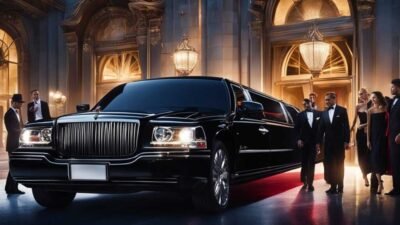Think about the last time you saw a company logo that made you pause. Maybe it was a record label with a bold graphic note, a clothing brand pulling inspiration from street art, or a café logo that carried cultural motifs reminiscent of home. Chances are, it wasn’t just a symbol—it told a story. That’s because music, art, and culture deeply shape how businesses design their visual identities, especially their brand symbols.
In today’s crowded marketplace, a logo isn’t simply about looking pretty on a website or packaging. It’s about resonance. It’s about embedding meaning, familiarity, and emotion into a design so that when people see it, they feel something. And where do those feelings come from? Very often, from shared cultural roots, the art movements we admire, or even the music that inspires us.
Let’s explore how these elements weave their way into business symbols and why paying attention to them can elevate your brand—without demanding a massive budget.
The Rhythm of Music in Branding
Music is universal. It can lift moods, stir nostalgia, or even inspire movements. Businesses know this, which is why jingles, playlists, and soundscapes are common in marketing. But beyond the audible, music influences how visual symbols are created.
Take jazz, for example. The free-flowing, improvisational spirit of jazz often translates into logos with fluid lines, unexpected shapes, or bold, playful color palettes. Compare that to a classical-inspired brand—its logo might feature symmetry, elegant fonts, and timeless motifs that reflect refinement and sophistication.
One fascinating example is the way record labels in the 70s and 80s leaned into psychedelic art, pulling directly from the era’s music scene. Swirls of neon, abstract shapes, and surreal graphics became instantly recognizable. They weren’t just logos; they were cultural timestamps.
If your business has ties to music—or simply wants to channel its energy—you can tap into musical influences when designing your brand symbol. Ask yourself: Is your brand more rock ‘n’ roll (edgy, bold), acoustic folk (earthy, natural), or electronic dance (dynamic, futuristic)? Each has a distinct visual “sound.”
Art Movements That Shape Design
Art has always been the language of innovation. From Renaissance paintings to graffiti walls, creative expression leaves behind styles that brands eagerly borrow to communicate their values.
For instance, the minimalism of Bauhaus continues to influence sleek, functional business symbols today. Brands that want to appear modern, straightforward, and efficient often lean on this clean aesthetic. On the other hand, pop art—colorful, bold, and unafraid of exaggeration—still inspires companies that want to make an immediate, fun, and approachable impression.
Street art is another powerful influence. Urban brands, especially in fashion, frequently pull from graffiti and mural culture. The raw lines, spray-paint textures, and layered colors speak to authenticity and community roots, appealing to younger, socially aware audiences.
By referencing a particular art style in your logo, you’re not just picking a look—you’re aligning your business with a legacy, a movement, and a cultural conversation.
Cultural Symbols That Connect
Culture provides perhaps the deepest well of inspiration for logos and brand symbols. Think of Starbucks and its mermaid emblem, drawn from myth and maritime history, which ties directly to its origin in Seattle, a port city. Or consider brands that incorporate indigenous patterns, heritage-inspired typefaces, or regional flora and fauna in their designs.
These symbols don’t just look attractive—they communicate identity. They tell customers, “We see you, we share your roots, we respect your traditions.”
But here’s the catch: cultural inspiration must be approached with respect. Borrowing without understanding can feel like appropriation. That’s why the most successful brands collaborate with cultural communities or ensure they understand the meaning of the motifs they use. When done thoughtfully, cultural symbolism adds layers of depth and relatability to your visual identity.
Technology as the Creative Bridge
Here’s where things get exciting. You don’t need to be a professional designer or have access to expensive agencies to bring musical, artistic, or cultural influences into your logo. Technology makes it accessible.
Today’s design tools allow startups, small businesses, and even solo entrepreneurs to experiment with these creative ideas at their fingertips. For instance, with something like the Adobe Express logo generator, you can start from templates inspired by different styles, adjust colors, test fonts, and refine layouts until your brand symbol feels uniquely yours.
This democratization of design empowers businesses to draw from cultural and artistic influences without spending thousands. It also allows for iteration—because your brand identity doesn’t need to be set in stone from day one. You can evolve it as your business grows and as new cultural or artistic inspirations emerge.
Examples of Influence in Action
Let’s bring this to life with a few scenarios:
- A coffee shop inspired by jazz: Their logo features flowing notes and deep, warm colors. The symbol mirrors the rhythm of the café’s late-night sessions where live bands play. Customers don’t just see coffee; they feel a vibe.
- A fashion startup tapping into street art: Their logo uses sharp, spray-paint-inspired typography with bold, contrasting colors. It reflects the authenticity of their designs, rooted in urban culture.
- A wellness brand with cultural grounding: They incorporate mandala-inspired elements in their logo, not just for visual appeal but to highlight mindfulness and balance, which are core to their mission.
Each of these examples shows how music, art, and culture give brands more than just a look—they provide a story, an identity, and an emotional connection.
Tips for Infusing Music, Art, and Culture Into Your Symbol
- Start with your brand values. What story are you trying to tell? Music, art, and culture are tools to express those values visually.
- Research deeply. If you’re drawing inspiration from a cultural motif, learn its history. If you’re channeling an art style, understand its roots.
- Keep it simple. A symbol should be instantly recognizable. Don’t overload it with every detail from your inspiration source.
- Use technology to test variations. Tools make it easy to see how your symbol looks in different contexts—on business cards, packaging, or digital platforms.
- Seek feedback. Sometimes, what feels meaningful to you might not resonate with your audience. Share drafts and ask for honest input.
The Takeaway
At the heart of it, business symbols aren’t just about design—they’re about connection. Music infuses rhythm and energy, art provides style and legacy, and culture grounds your brand in shared identity. When combined thoughtfully, they create logos that not only look professional but also feel deeply authentic.
In a world overflowing with visuals, a symbol that draws from these rich influences stands out because it’s not just an image—it’s a story people want to be part of. And with today’s technology, the ability to design such a symbol is no longer a privilege of big corporations. It’s available to anyone willing to explore, experiment, and let creativity guide the way.
So, the next time you think about your logo, don’t just ask, “Does this look good?” Ask instead: “Does this sound like the music we’d play? Does it reflect the art we’d hang on our walls? Does it honor the culture we want to celebrate?” The answers might just lead you to a business symbol that truly lasts.













